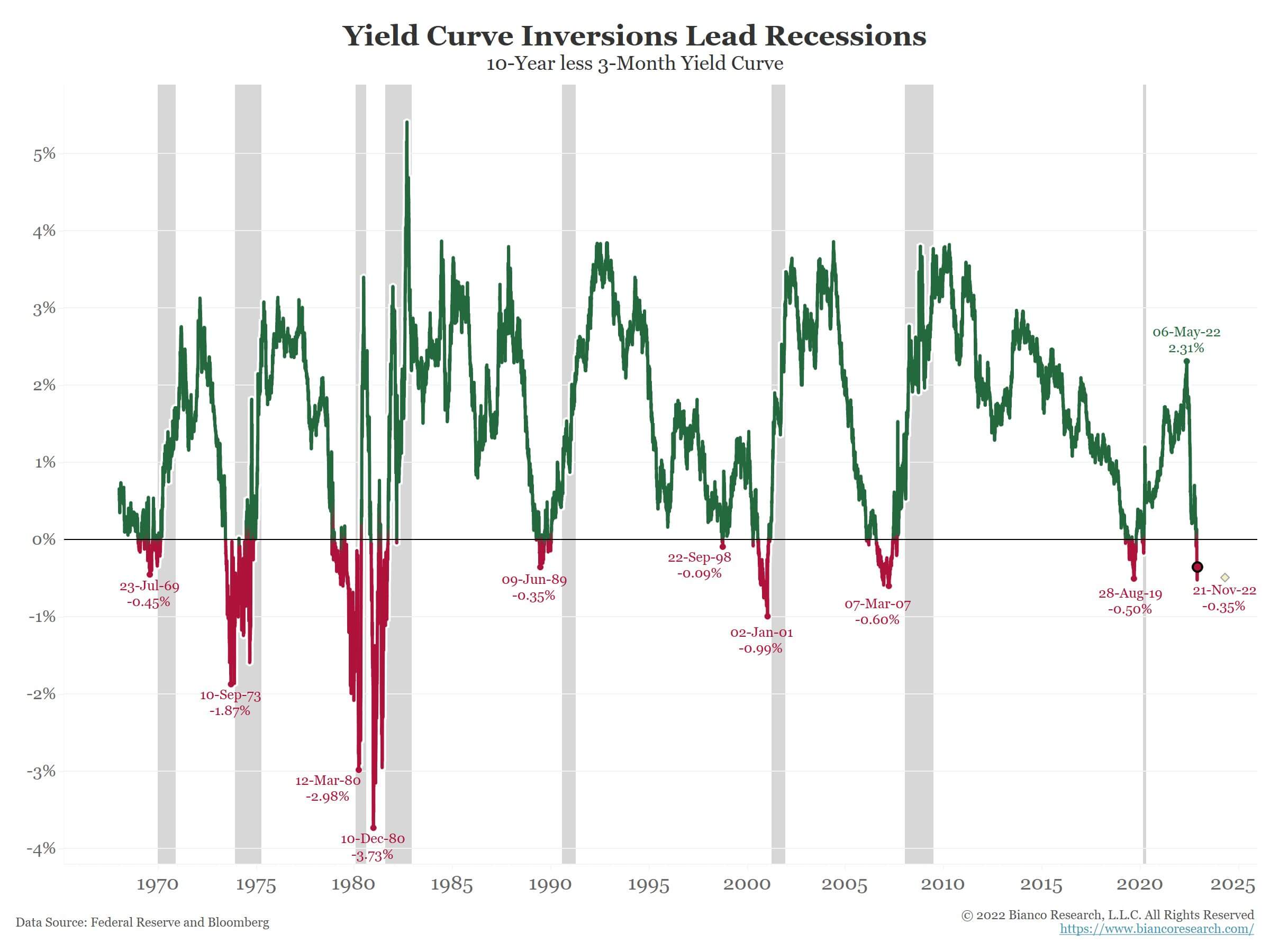Take a deep dive into how Bitcoin fundamentals look on-chain as the dust settles from the FTX fallout
Price decline from ATH compared to previous bear markets
Bitcoin is currently down 75% from its all-time high (ATH), with a maximum drawdown of 76.9% from the fallout of FTX on November 9. However, this is not unusual in Bitcoin’s history. During the 2014-15 bear market, Bitcoin retreated over 85% from its ATH, lasting around 286 days in its maximum capitulation.
A similar event occurred during the 2018-19 bear market, which also saw an 84% reduction in 136 days. The 76% drawdown started in mid-November, so based on history this could continue into Q1 2023.
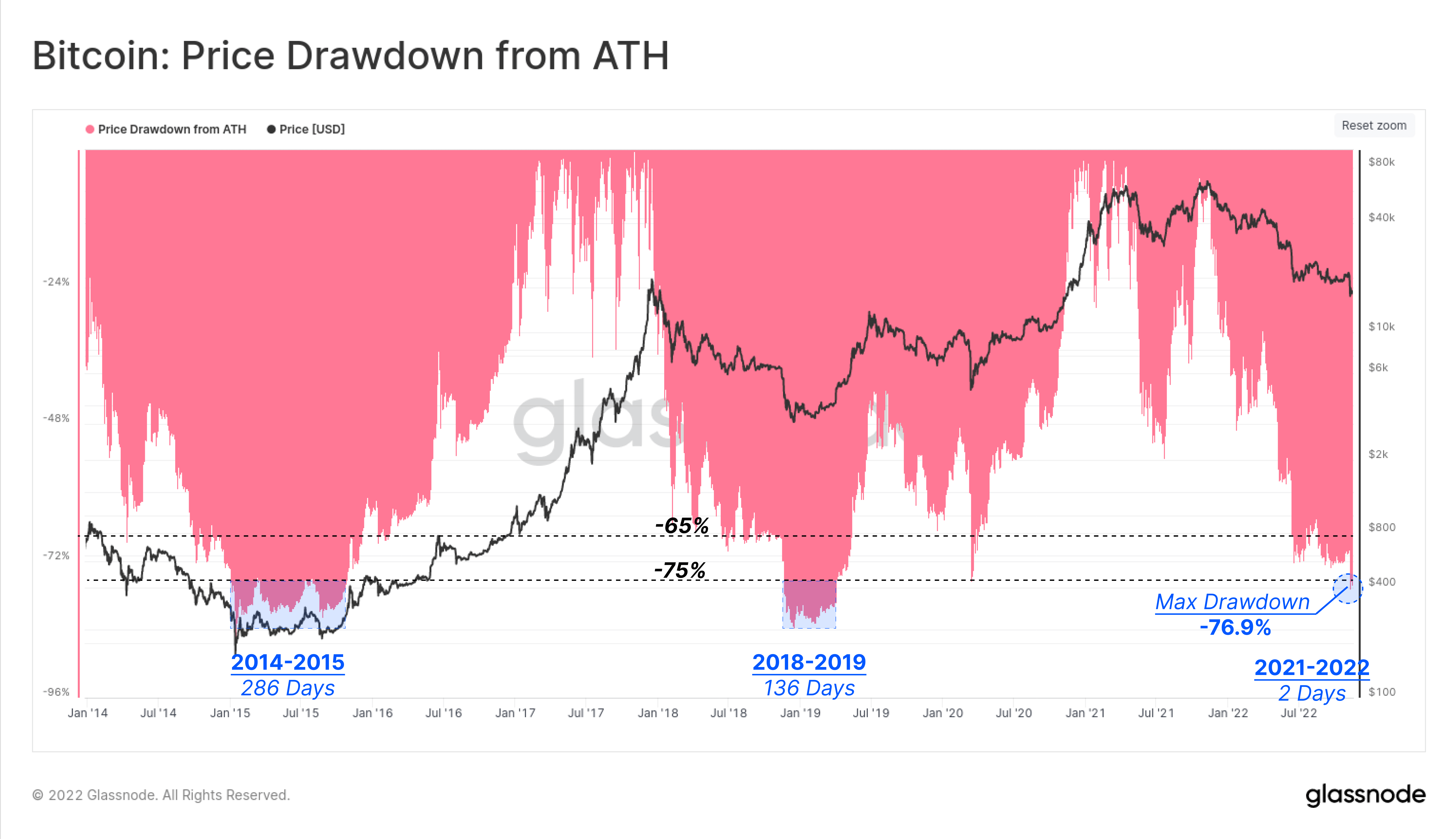
2022, another bear market compared to 2014 and 2018
The current bear market of 2022 is unlike the bear markets of 2014 and 2018 for many different reasons, primarily due to Bitcoin becoming a mainstream currency.
Era 2 – Second Half (2012–2016)
During the bull run of 2013, when Bitcoin surged to over $1,000 – and in 2017, when the price reached $20,000 – coins quickly made their way to exchanges.
During the second halving, or epoch 2 – which saw Bitcoin claim a high of $1,000 – nearly 6.5% of Bitcoins returned to centralized exchanges. From the beginning to the end of epoch 2, a few hundred Bitcoins to over a thousand Bitcoins ended up on exchanges.
Epoch 3 – Third halving
The third era started in mid-2016, with around 1 million Bitcoins on exchanges. At the end of the third halving, the exchanges had over 3 million Bitcoins, just before Covid 2020. This caused the price of Bitcoin to rise to $20,000 at the end of 2017, but then as low as $3,000.
Epoch 4 – Fourth halving
Since covid and the start of the fourth halving, exchanges have seen a decline of over 4% of Bitcoin supply, leaving around 12% of supply on exchanges. Over the past 30 days, over 135,000 Bitcoins have been withdrawn from exchanges – a 1% deduction from the Bitcoin supply. This is the first era that coins are removed in a bear market. So far, Bitcoin has seen a low of $15,500 from a high of $69,000.
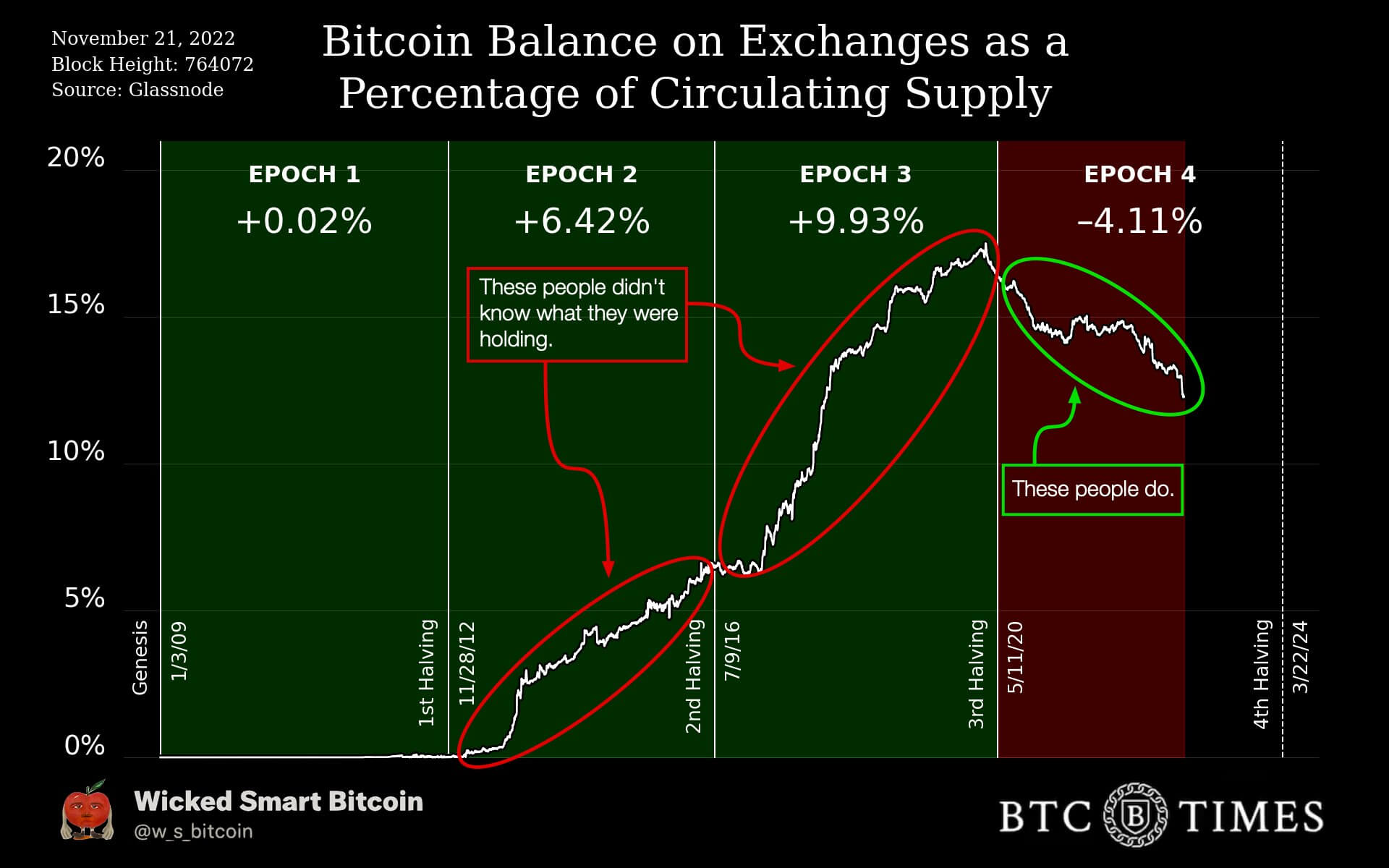
This time is different, retail is withdrawing its coins
A further deep dive into which cohorts withdraw Bitcoin from exchanges:
As can be seen since Bitcoin’s inception, a multitude of green to yellow transactions have signaled small transactions. As time passed and until around 2017, a flurry of red transactions began to emerge, signaling institutional adoption heading into the space.

But by filtering to show retail transactions under $100,000, it’s clear that they FOMO during the peaks in 2017 and 2021 – with over $200 million on peak days. On the other hand, over the past 30 days, the network has seen the most withdrawals from retail ever, surpassing $180 million. Retail may have learned a huge lesson with the fallout of FTX and the meaning of “not your keys, not your coins.”

Due to the collapse of FTX and other centralized entities within the crypto space, self-custodial has been a hot topic and the number of self-custodial coins has grown exponentially in 2022 (from 14 million to 15 million). The current circulating supply of 19.2 million would put self-deposit coins at 78%.
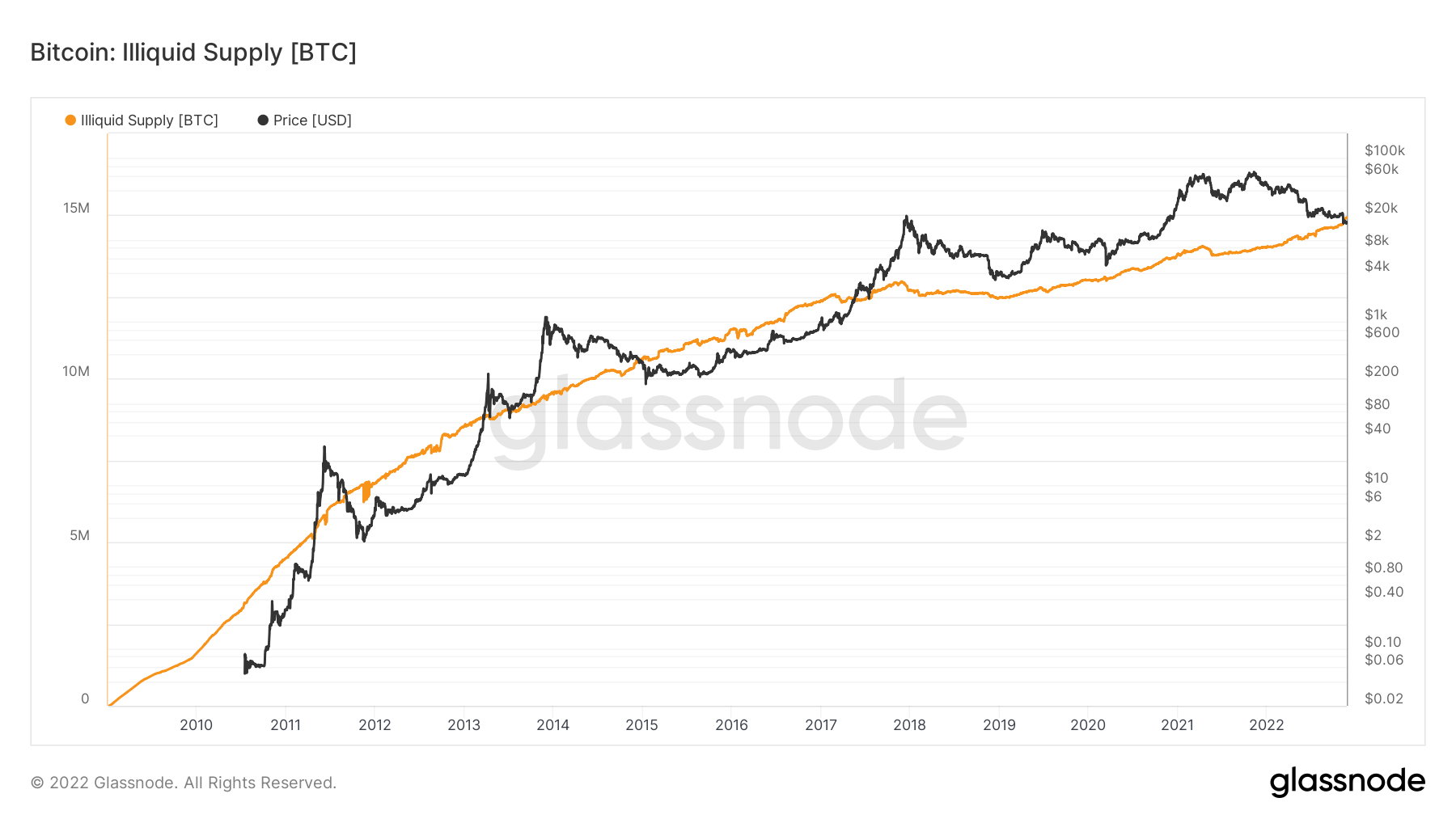
Mempool was packed, people don’t wait for proof of reserves
Due to the number of coins leaving the exchanges, the mempool has seen a significant increase in transactions – especially in June and November. A clear connection can be seen in capitulation from the fallout of FTX and Luna.
What happened last week saw a huge amount of network volume and traffic build up on the chain. When the mempool becomes lagging, the nodes prioritize those with higher fees during high volumes.
On November 14, 154 blocks were waiting in the mempool. This was the most significant lag since May 2021, and such massive activity has rarely been seen outside of a bull market.
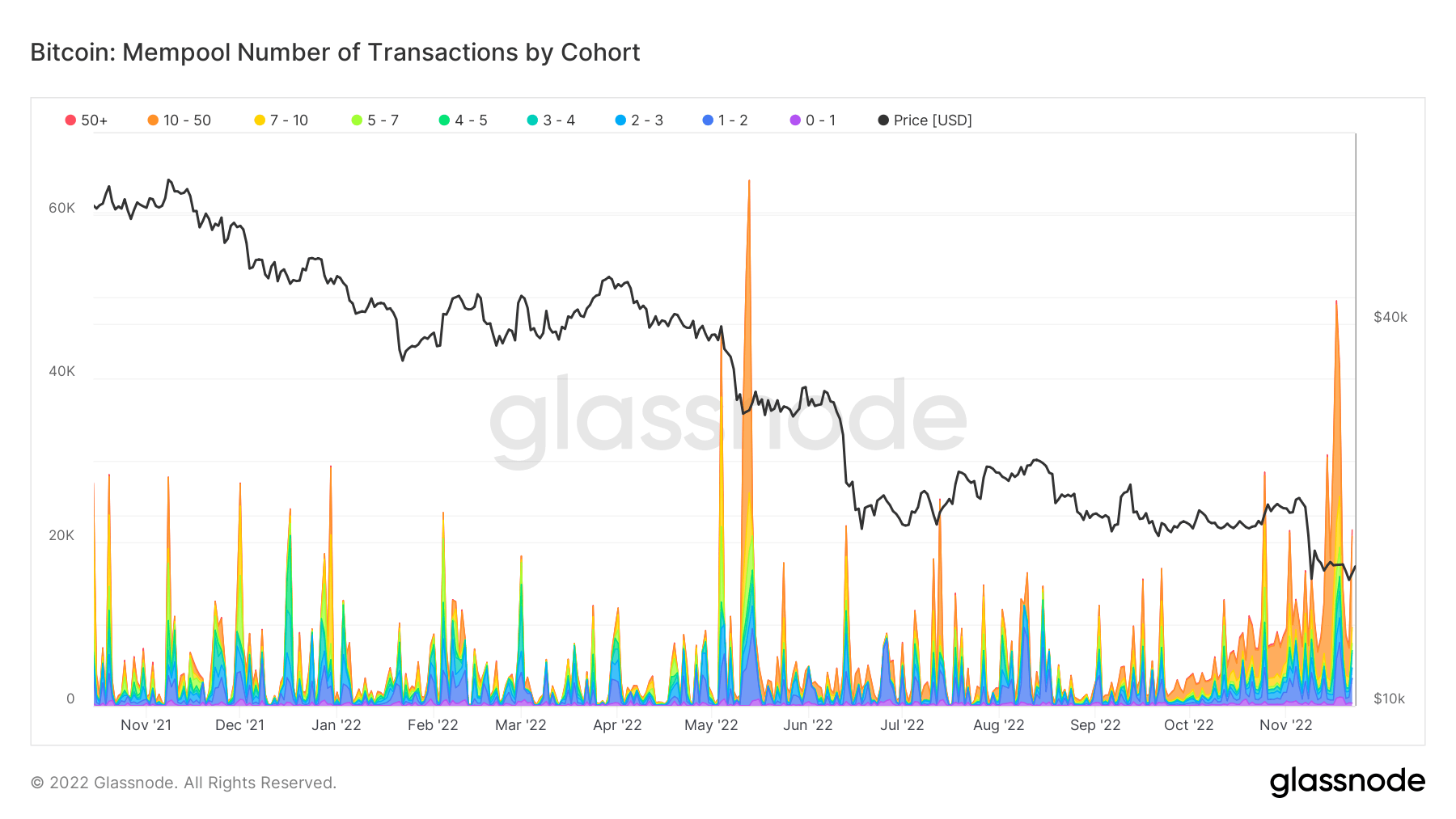

New devices enter the ecosystem
Healthy network adoption is often characterized by an increase in daily active users, more transaction throughput, and increased demand for block space (and vice versa). The number of new units on the chain uses our unit adjustment methods to more accurately measure the scale, trend and momentum of activity across the network.
Digging deeper into chain data shows that most non-null addresses were created in the last month. The 30-day simple moving average (SMA) of new addresses exceeded the 365-day SMA, which was flattering for most of 2022.
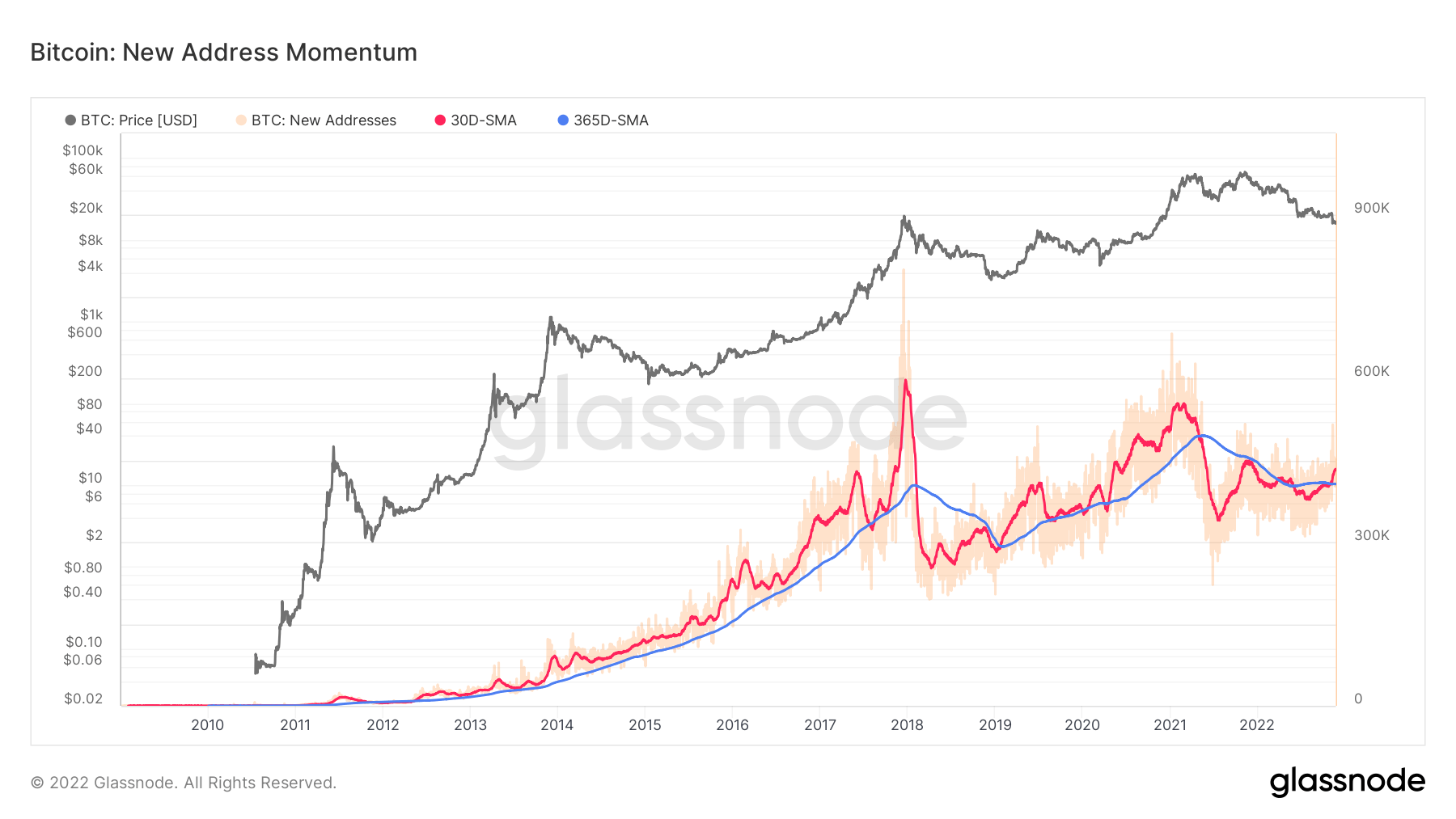
The growth in the number of new addresses was transferred to a higher momentum. All new non-zero balance addresses had to acquire that balance in the last month, which drastically increased new devices on the network.
The last time both new units and new addresses were above 365DMA was during the 2020-2021 bull run.
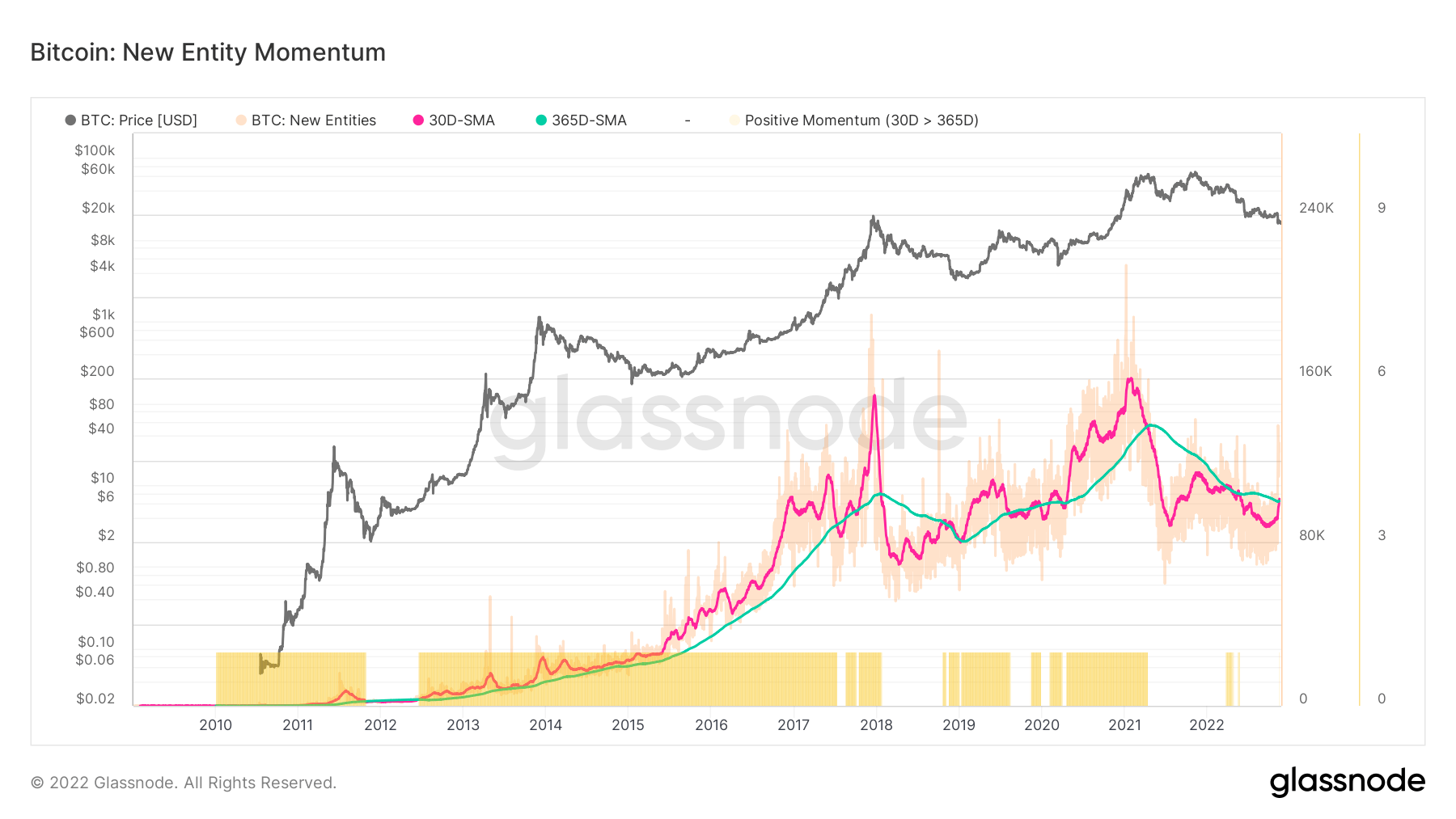
A historical inverted US yield curve
An inverted yield curve is when short-term interest rates are higher than long-term interest rates, and the market is telling the food that they are too tight.
What makes the curve turn? Short interest rates rise due to the market believing that the Fed will continue to raise interest rates, while long interest rates fall below short interest rates in the belief that at some point the economy will see inflation fall.
Many different inverted yield curves are looked at to identify recessions, especially ten minus two years and ten years minus three months.
Currently, over 75% of the entire US Treasury curve is inverted; anytime above 70%, a recession has occurred in the last 50 years.
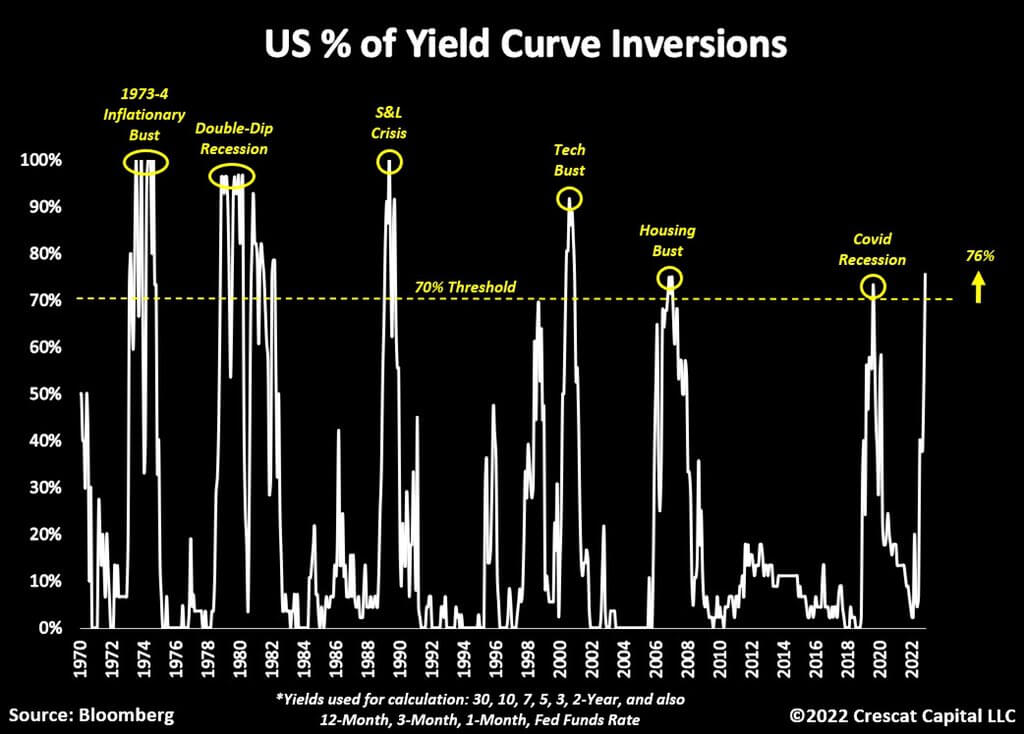
Economists believe that the 10-year less 3-month interest rate spread is the most accurate for identifying recessions as most research has gone into it. The curve has been inverted for nearly two weeks, signaling “sustained inversion.”
When the 3-month/10-year yield curve inverts for ten consecutive days, it is 8 to 8 for predicting recessions over the past 50+ years. The average lead time is 311 days or about ten months. – Jim Bianco (Bianco Research)
